Overview
The article provides a step-by-step guide on how to effectively use an A1C to average blood sugar calculator, emphasizing its importance in managing diabetes. It outlines the process of inputting A1C values, interpreting results, and the significance of regular monitoring to make informed health decisions, supported by evidence of improved health outcomes through consistent A1C tracking.
Introduction
Understanding blood sugar management is essential for individuals living with diabetes, and the A1C test plays a pivotal role in this process. This test, which measures the percentage of glycated hemoglobin in the blood, offers a broader perspective on glucose levels over the past two to three months, contrasting with daily blood sugar readings. Maintaining an optimal A1C level is critical; for most, this means keeping it below 7% to mitigate the risk of complications.
As diabetes prevalence continues to rise, recent studies highlight the importance of:
- Regular A1C monitoring
- The integration of educational resources to empower patients in their health journeys
This article delves into:
- The significance of the A1C test
- Practical guidance on using A1C calculators
- The implications of A1C results for effective diabetes management
Understanding the A1C Test: A Key to Blood Sugar Management
The A1C test, commonly referred to as glycated hemoglobin, is a crucial diagnostic tool that measures the percentage of glucose bound to hemoglobin in the blood. This test provides a more comprehensive view of average blood sugar readings over the preceding two to three months, which can be analyzed using an a1c to average blood sugar calculator, contrasting the snapshot offered by daily blood sugar measurements. For individuals diagnosed with the condition, it is generally advised to keep an A1C measurement below 7% to substantially decrease the risk of complications related to the illness.
Comprehending A1C results is essential for utilizing a1c to average blood sugar calculator in creating effective health strategies and applying informed lifestyle changes. Recent studies highlight the correlation between A1C levels and health outcomes, emphasizing the importance of regular monitoring in reducing risks associated with complications. In 2024, expert insights emphasize the significance of the A1C test as a vital part of thorough care for individuals with high blood sugar, highlighting the importance of using an a1c to average blood sugar calculator for effective oversight.
T2DSolutions is dedicated to enhancing health oversight through education and community assistance, debuting as a fresh resource center that offers newly diagnosed individuals with tools and innovative perspectives to navigate their health journey. The economic effect of blood sugar regulation is substantial, with direct projected expenses rising from $227 billion in 2012 to $307 billion in 2022, highlighting the necessity for effective treatment strategies. Additionally, the American Diabetes Association Professional Practice Committee emphasizes the importance of targeting glycemic goals for critically ill individuals with hyperglycemia, recommending a target glucose range of 140–180 mg/dL (7.8–10.0 mmol/L).
Furthermore, a case study titled 'Facilitating Positive Health Behaviors and Well-being to Improve Health Outcomes' illustrates the importance of promoting positive health behaviors and the integration of telehealth in managing blood sugar conditions, providing valuable insights into practical applications of the information discussed.
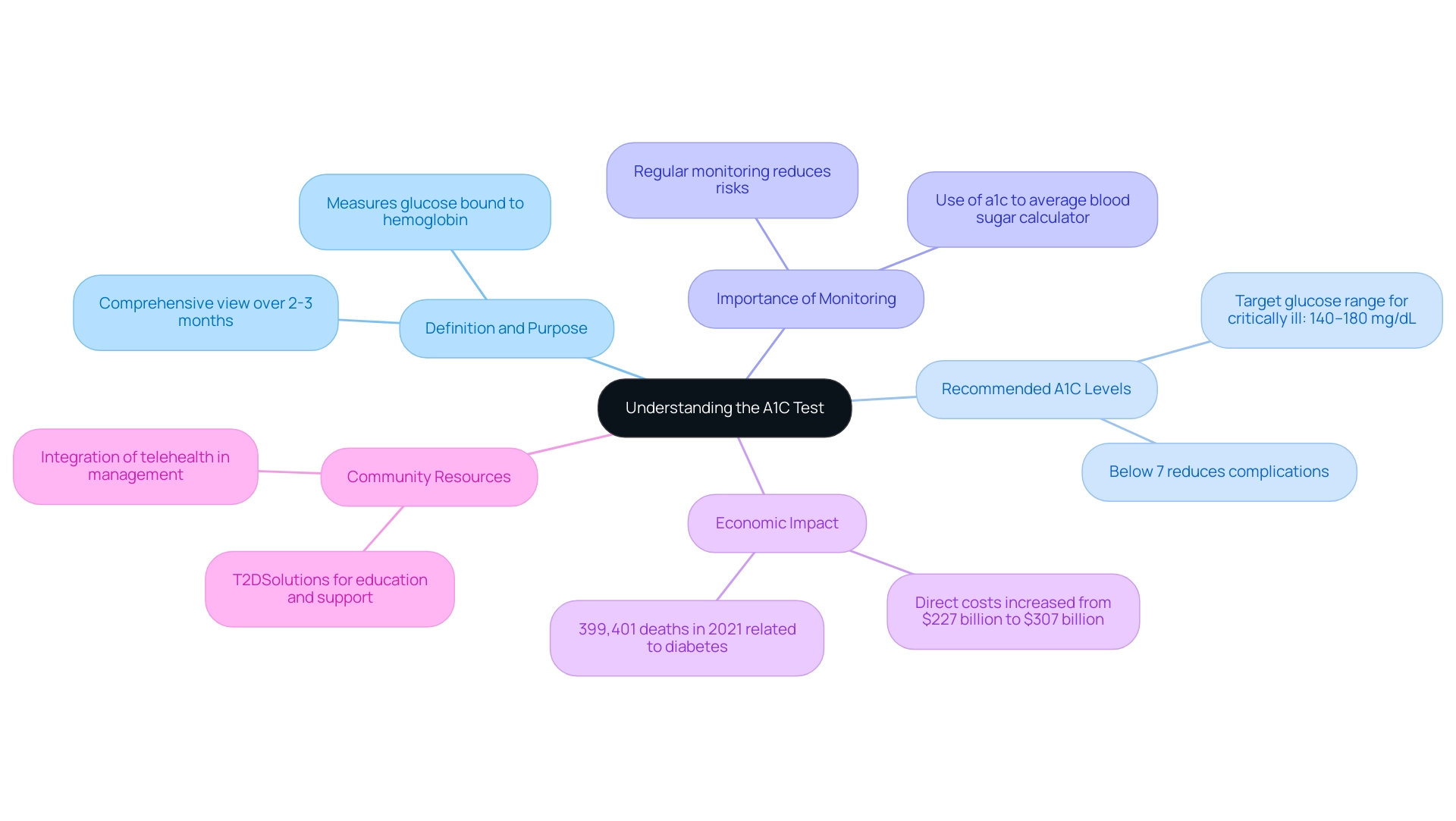
Step-by-Step Guide to Using the A1C to Average Blood Sugar Calculator
-
Begin by locating a reliable A1C to average blood sugar calculator available online. It is crucial to select a tool from a reputable health organization or a recognized diabetes education platform to ensure the accuracy of the results.
-
Input Your A1C Value: Enter your most recent A1C percentage into the specified field of the calculator. This value is usually found on your lab report and serves as the foundation for your calculations.
-
Once you have entered your A1C value, click the 'Calculate' button on the A1C to average blood sugar calculator. The tool will provide your average blood sugar measurement, typically displayed in either mg/dL or mmol/L, based on the calculator’s settings.
Record Your Results: Document the calculated average blood sugar measurement for future reference. This information is essential for informed discussions with your healthcare provider about your diabetes care and potential adjustments to your treatment plan. Regular A1C testing is recommended by healthcare professionals every three to six months to help monitor your progress effectively.
- Utilize eAG for Discussions: Consider how the estimated average glucose (eAG) can enhance your discussions with healthcare providers regarding glucose control. The eAG offers a clearer view of your blood sugar levels, which can assist in making informed choices about your strategies.
Repeat Regularly: Periodically utilize the calculator after receiving new A1C results to monitor changes in your average blood sugar over time. Consistent self-monitoring is crucial as it enables you to track your progress and modify your strategies accordingly. The A1C test functions as both a diagnostic tool and a guide for treatment choices, assisting in identifying potential complications and allowing you to take charge of your health.
As T2DSolutions launches, this resource will emerge as an essential hub for newly diagnosed patients aiming to comprehend and manage their condition effectively. T2DSolutions will provide a variety of educational materials, user-friendly tools, and community support features, assisting patients in managing their condition with confidence. By offering step-by-step guides on how to use A1C and blood sugar calculators, T2DSolutions aims to empower patients with the knowledge and resources they need for informed health decisions.
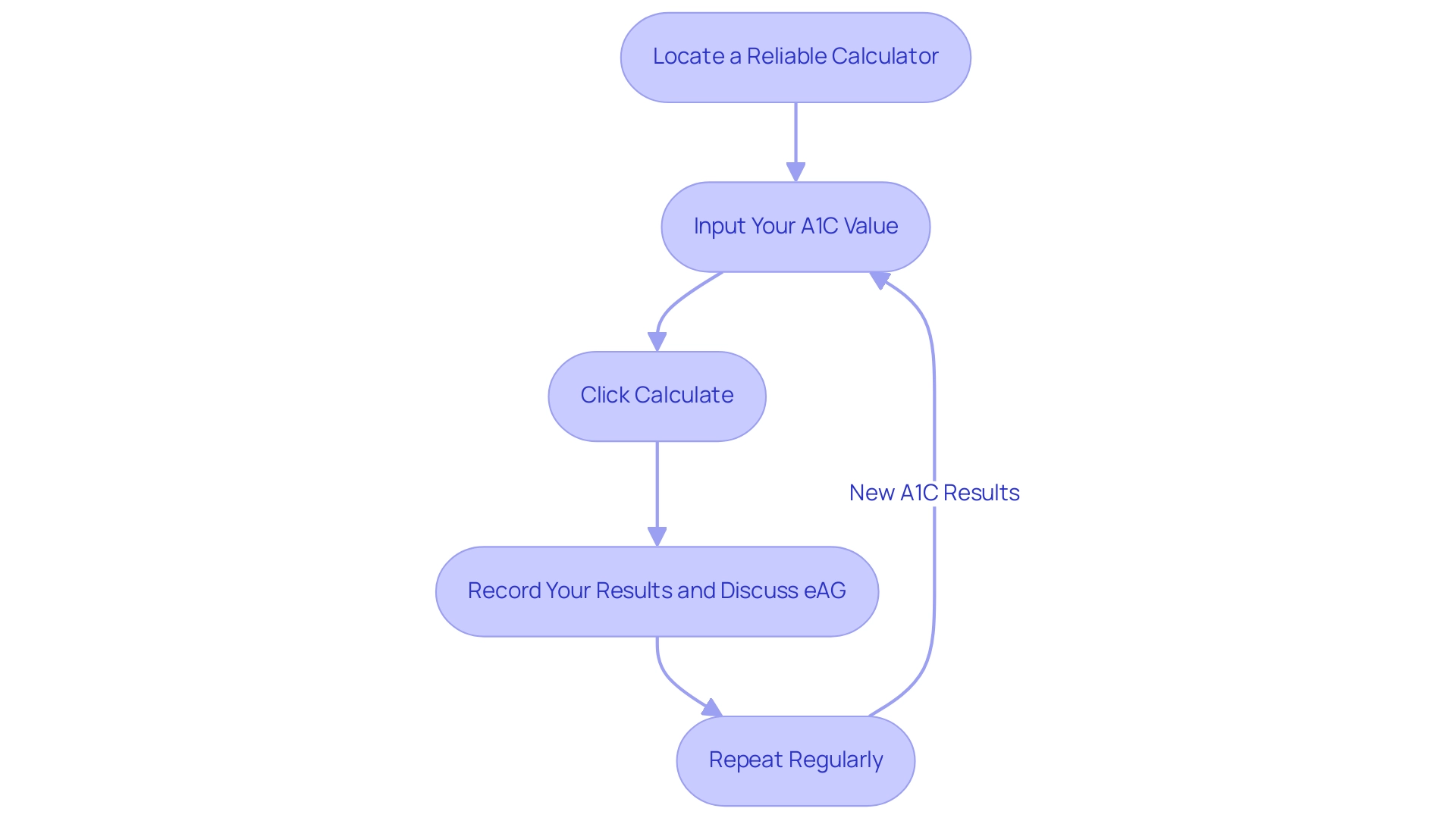
Interpreting Your A1C Results: What They Mean for Your Health
A1C results are categorized as follows:
- Below 5.7%: This range is considered normal and indicates that the individual does not have a blood sugar condition.
- 5.7% to 6.4%: This category signifies prediabetes, suggesting an elevated risk for developing type 2 blood sugar issues in the future.
- 6.5% or higher: Results in this range confirm a diagnosis of a blood sugar condition.
For those already diagnosed with a blood sugar condition, maintaining an A1C measurement of less than 7% is generally recommended to minimize the risk of complications. Recent data shows that the proportion of the population with elevated blood sugar conditions rises significantly with higher A1C readings, highlighting the necessity of regular monitoring. T2DSolutions aims to support newly diagnosed patients with comprehensive resources, including educational materials and tools for tracking A1C levels, to help them understand and manage their A1C levels effectively.
In fact, recommendations emphasize the need to start continuous glucose monitoring (CGM) early for individuals with type 1 conditions, even at diagnosis, to better manage their A1C levels. Furthermore, trends in this health issue among youth show a concerning rise, particularly among non-Hispanic Asian or Pacific Islander youth, highlighting the critical need for early intervention and education on prevention. This context is essential for newly diagnosed patients to understand the urgency of utilizing an A1C to average blood sugar calculator to track their A1C results.
It is important for patients to talk about their A1C results with healthcare providers and utilize an A1C to average blood sugar calculator to create a personalized care plan suited to their specific health status and needs. Participating in conversations regarding A1C results not only helps in comprehending the consequences of these figures but also improves overall care for those with diabetes, which T2D Solutions is committed to supporting as part of its mission.
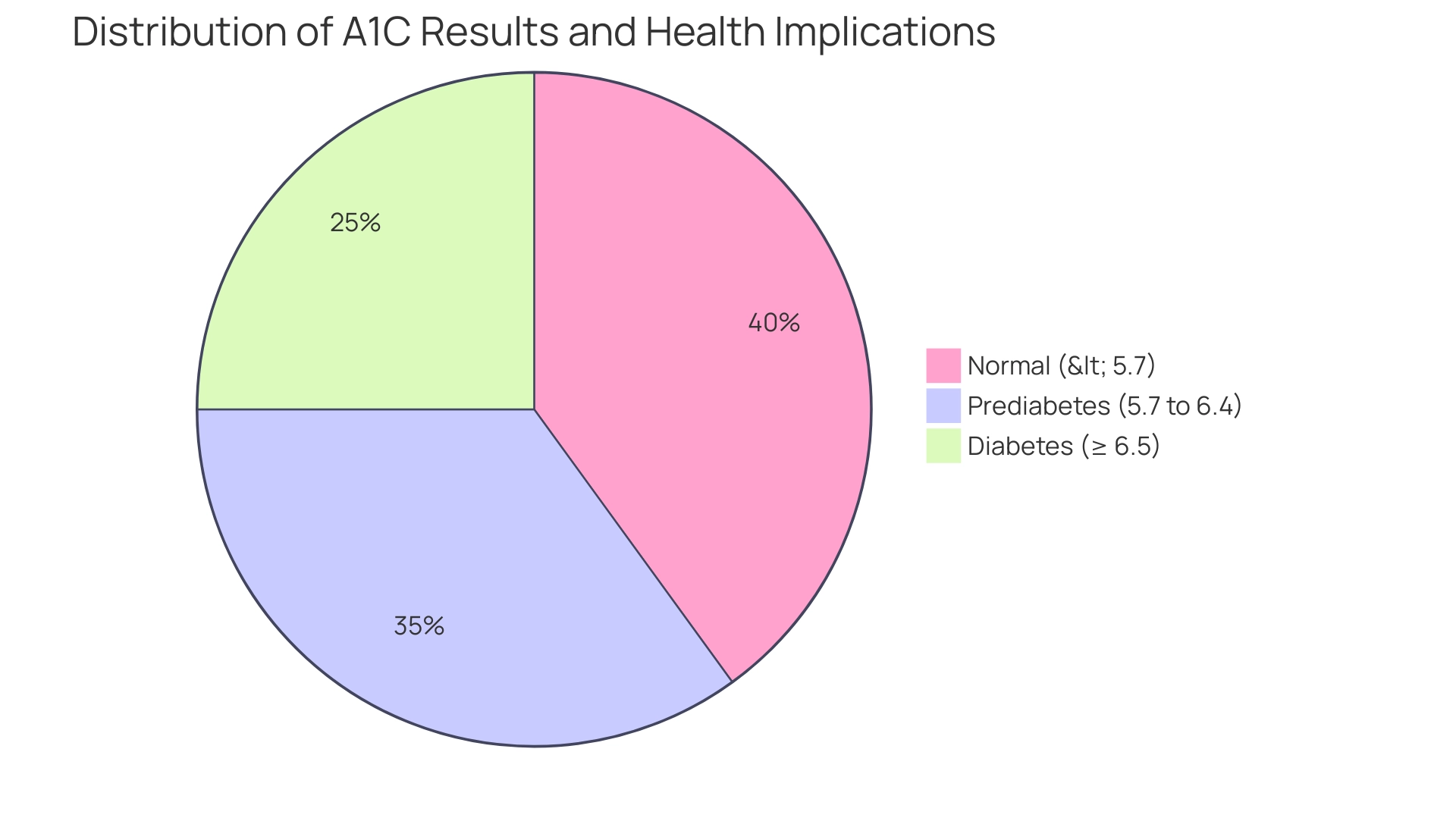
The Importance of Regular A1C Monitoring for Diabetes Control
Routine observation of A1C readings, usually advised every three to six months, is a fundamental aspect of successful blood sugar care, especially when using an a1c to average blood sugar calculator. This practice not only helps evaluate the effectiveness of current management strategies for blood sugar conditions but also facilitates timely adjustments to medications, dietary habits, and lifestyle choices. For example, the use of personal continuous glucose monitoring (CGM) devices and insulin pumps in hospital settings has shown to enhance patient care, emphasizing the importance of proper supervision and adherence to protocols for optimal glycemic control.
Regular monitoring of A1C values is vital, and using an a1c to average blood sugar calculator allows individuals to recognize patterns in blood sugar management, which is important for avoiding possible complications linked to health issues related to diabetes. Research indicates that lower mean glucose levels, along with reduced standard deviations and increased time in range (TIR), are associated with improved health outcomes, such as a lower risk of adverse neonatal outcomes in pregnant women with this condition. Specifically, lower mean glucose and higher TIR percentages have been associated with a reduced risk of large-for-gestational-age births and other adverse neonatal outcomes.
Furthermore, researchers in the field emphasize that the a1c to average blood sugar calculator is vital for regular A1C monitoring to maintain optimal glycemic control. Lara J. Akinbami emphasizes that 'all material appearing in this report is in the public domain and may be reproduced or copied without permission; citation as to source, however, is appreciated,' highlighting the importance of sharing knowledge on A1C monitoring. This underscores the necessity for patients to remain vigilant in their monitoring efforts to ensure the best possible health outcomes.
T2DSolutions will provide valuable resources and tools to support patients in their A1C monitoring journey, helping them to achieve better management of their condition. We encourage readers to visit T2 Solutions for more information and community support in managing their condition effectively.
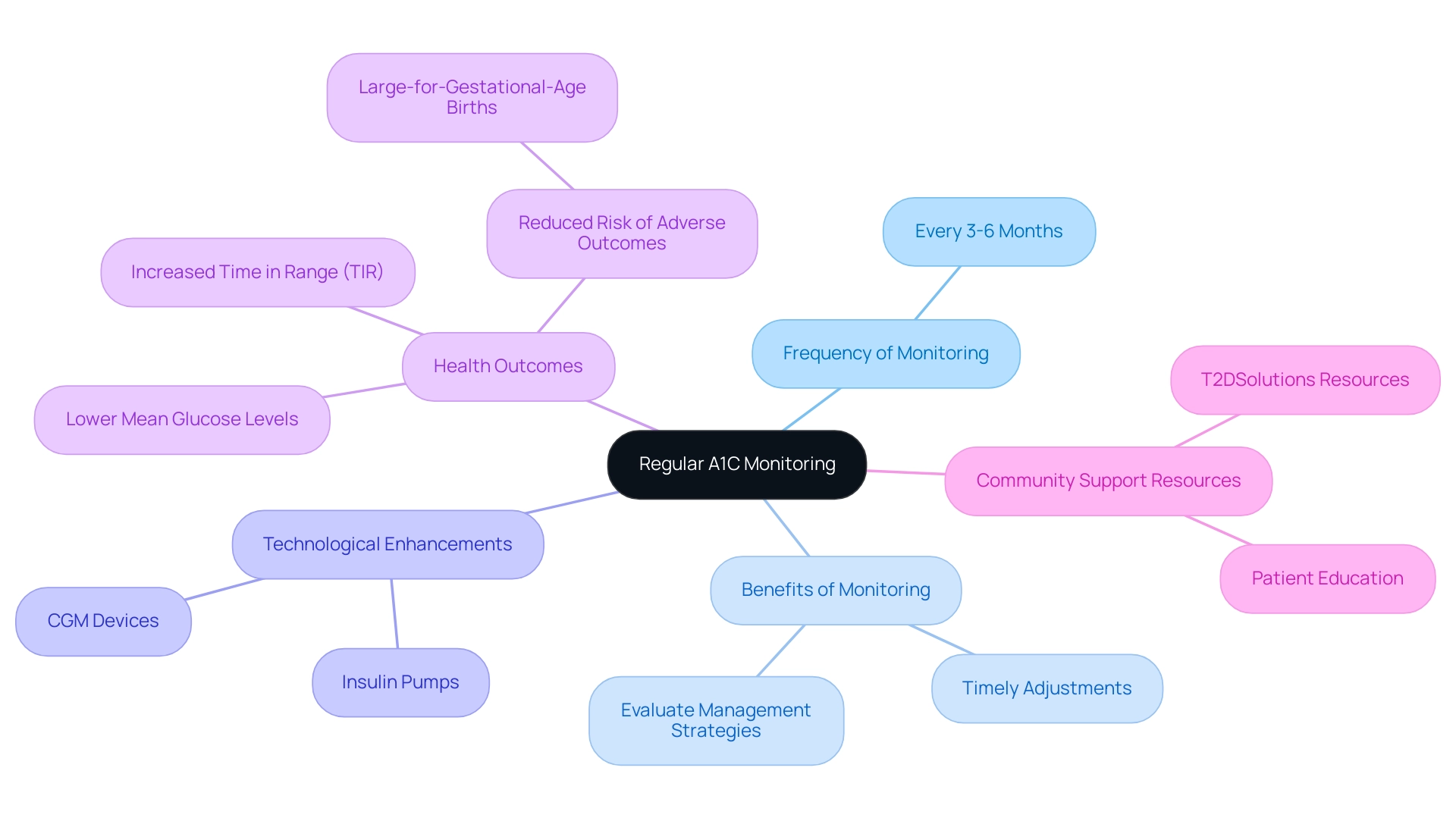
Common Questions About A1C Testing and Calculators
-
What is the difference between A1C and daily blood sugar readings?
The A1C test provides an overview of average blood glucose levels over the past two to three months, reflecting long term control of diabetes. In contrast, daily blood sugar readings offer a snapshot of current glucose levels, which can fluctuate based on immediate factors such as diet, activity, and medication. Both measurements are essential for effective management of the condition, as they provide complementary information about a patient’s state. It's important to note that measurement methods for A1C can vary, and certain hemoglobin variants may affect results, necessitating careful interpretation. -
How often should I get my A1C tested?
It is generally recommended that individuals with diabetes undergo A1C testing every three to six months. However, specific testing intervals may vary depending on individual health circumstances and the recommendations of healthcare providers. Regular testing can help in monitoring blood glucose control and in making timely adjustments to treatment plans. -
Can I use the calculator if I have other health conditions?
Yes, the A1C and blood sugar calculators can be beneficial for individuals managing diabetes alongside other health conditions. Nevertheless, it is advisable to consult with your healthcare provider for tailored advice, especially if other conditions could impact blood glucose levels. -
What should I do if my A1C is higher than recommended?
If your A1C results exceed the recommended threshold, it is crucial to engage in a discussion with your healthcare provider. Together, you can explore potential adjustments to your treatment plan, which may include changes in medication, dietary modifications, and lifestyle adjustments. Comprehending the implications of elevated A1C levels is crucial for effective control of the condition, particularly since an A1C level of less than 7% relates to an average plasma glucose level of 170 mg/dL over the previous 60-90 days. Additionally, the variability in glucose measurements, as highlighted in the case study on biological variability, complicates the interpretation of glucose tests, emphasizing the need for standardized testing methods. As Chia-Chia Chen noted, misconceptions about managing the condition can persist, particularly among the elderly and less-educated patients, making it essential to address these issues during consultations. As T2DSolutions launches, it aims to provide comprehensive resources, including an A1C to average blood sugar calculator, educational materials, and community support, to assist newly diagnosed patients in managing their diabetes effectively.
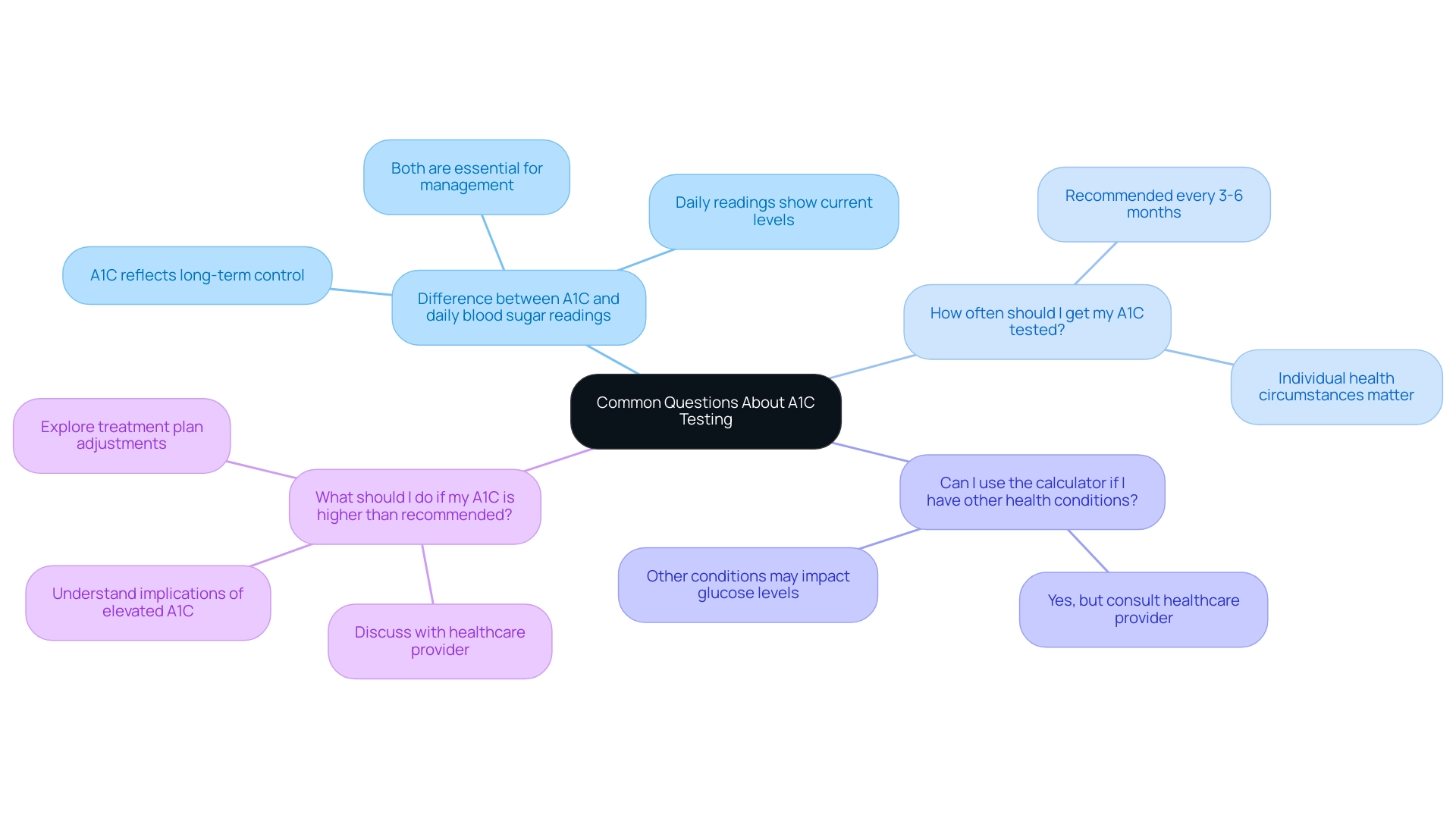
Conclusion
Understanding and managing blood sugar levels is crucial for individuals living with diabetes, and the A1C test serves as a fundamental tool in this process. By measuring the percentage of glycated hemoglobin, the A1C test provides a comprehensive view of average blood sugar levels over the past two to three months. Maintaining an optimal A1C level, ideally below 7%, is essential for reducing the risk of complications associated with diabetes. Regular monitoring of A1C levels not only aids in assessing the effectiveness of current management strategies but also empowers individuals to make informed decisions regarding their health.
Practical guidance on using A1C calculators enhances the ability to track and interpret these results effectively. By understanding the implications of different A1C levels, individuals can engage in meaningful discussions with healthcare providers to tailor their management plans. The integration of educational resources and community support, as demonstrated by initiatives like T2DSolutions, is vital for empowering patients and fostering positive health behaviors.
In conclusion, prioritizing regular A1C monitoring and understanding its significance is essential for effective diabetes management. As the prevalence of diabetes continues to rise, enhancing awareness and education around A1C testing will play a pivotal role in improving health outcomes and reducing the economic burden of the disease. Adopting a proactive approach to blood sugar management not only contributes to better personal health but also supports the broader goal of advancing diabetes care.



